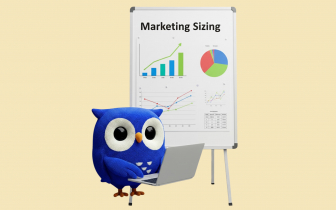How to Hire a Marketing Agency: A Strategic Guide for Business Owners

We don’t hire a marketing agency every month, or even every year, and we certainly don’t do it for fun. It's a strategic decision driven by business necessity, and as such, it requires significant time and intelligence about competitors, alternative offers, and contract best practices.
Want to know how to find and hire a worthy marketing agency that will help you attract new customers, boost revenues, and grow your business? Check out our complete guide for business owners. It will tell you how to do everything right and how to spot misleading promises before they cost you time and money.
When and why you need a marketing agency
While many companies aim to streamline business processes, modern marketing remains a highly specialized and complex activity. Despite noticeable progress in automation, campaigns require significant human involvement, oversight, and a diversified skill set.
Unless you’ve been deliberately building that skill set from the launch of your business, you’re unlikely to have it in-house to cover everything that a successful marketing function encompasses.
That’s why most businesses eventually hit a point where ad-hoc marketing stops delivering results. Growth slows, competitors become more visible, and internal efforts no longer create momentum.
At that stage, hiring a marketing company stops being a nice-to-have and becomes a strategic move — one that brings structure, expertise, and a unified approach to driving revenue and brand visibility.
What signals that your business is ready for professional marketing support?
- You’re generating leads, but conversion rates are flat or declining.
- Competitors consistently outrank you in search and visibility, despite your efforts.
- Your internal team is tactical, not strategic — busy with execution, but not generating growth.
- Marketing decisions are reactive rather than data-informed or goal-driven.
- Scaling your offer requires consistent acquisition, not occasional marketing bursts.
Marketing agencies exist not simply to “run campaigns,” but to architect growth systems that your internal team can’t realistically build alone.
Reports say that marketing agencies/outsourced teams use advanced tools and platforms that inbound teams often cannot afford. Moreover, many in-house teams lack access to the same level of analytics or segmentation capabilities.
Data also suggests that outsourcing marketing frees internal resources. Hiring a professional marketing firm allows internal staff to focus on core business competencies rather than marketing execution.
Evaluating potential agencies and spotting red flags
Today, there is no shortage of propositions on the creative agencies market. In fact, the choice is so wide that one can review suitable options for weeks and even months. The key is to match what the potential partners offer with what your business or organization really needs.
In most cases, businesses don’t just look for campaign execution; they look for strategic guidance, smart resource allocation, and accountability. Delivering on all of these expectations is a difficult task, and not every agency you encounter will be up to it. Most will succeed at impressing you at the start, but could disappoint in the long run.
Your goal is to find several capable strategic partners and skip the transactional ones, and then cherry-pick only the 2–3 candidates that can truly live up to their promises to you.
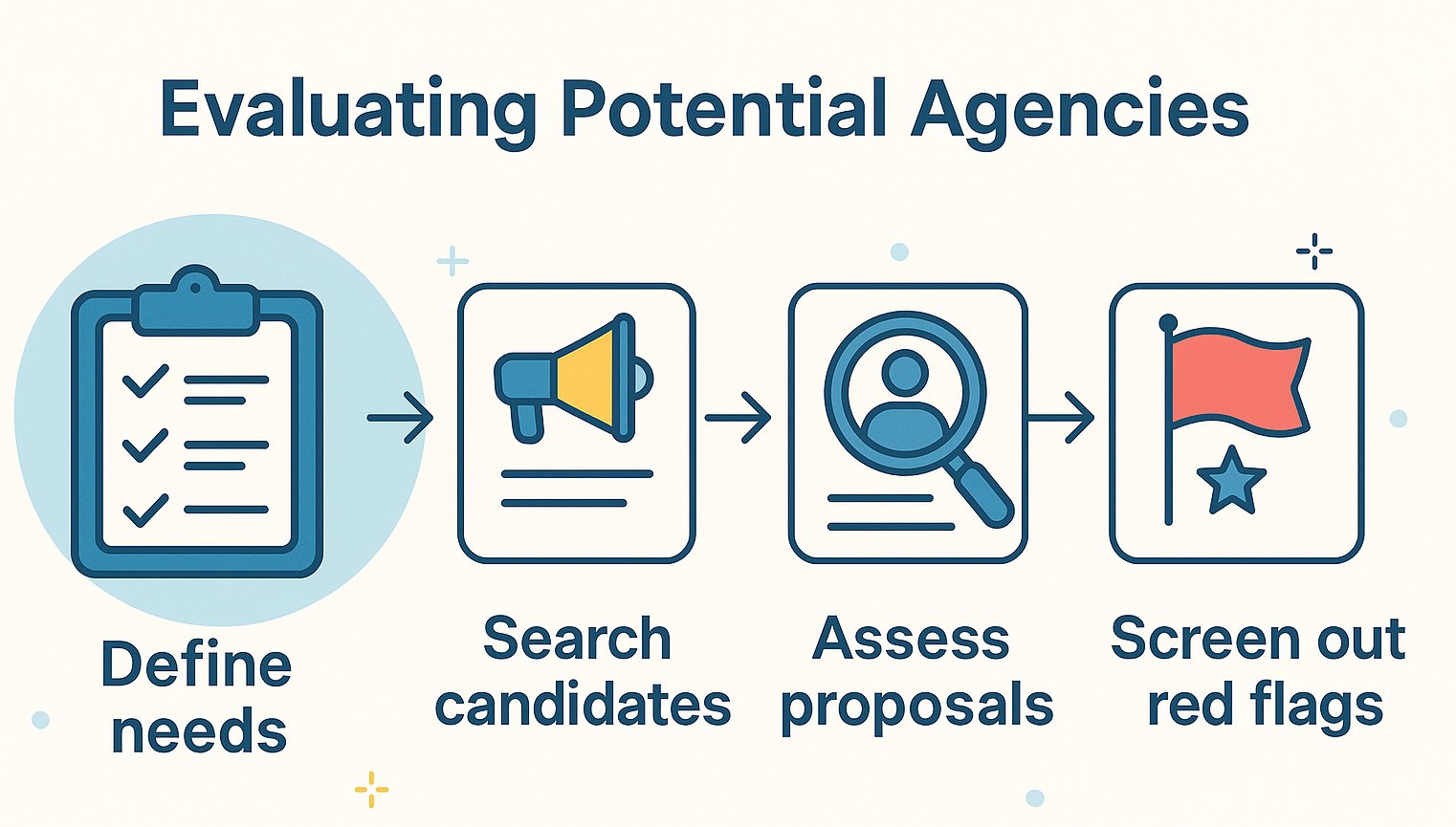
Source: ChatGPT
10 red flags you must avoid when reviewing agencies
People and companies make wrong choices, and they often stick to those choices no matter what, squandering their scarce resources trying to prove something to their colleagues and rivals. Therefore, it’s better to discuss the potential red flags that you can spot early and avoid making a wrong and expensive choice.
Be prepared to identify and resist deception, as it’s easy to get distracted by flashy portfolios and smooth messaging. Before you hire anyone, you need to look past the marketing buzzwords and focus on operational signals.
Here’s what should immediately raise your eyebrows:
- They give generic recommendations before learning anything about your business model.
- They sweet-talk a lot, and don’t listen to what you say and ask, or cannot answer your questions straight.
- They’re not flexible, not willing to adjust tactics and processes (especially technical) to meet your unique requirements.
- Their proposal looks like a template with your logo pasted on top.
- They insist on long-term contracts right away, with no trial period or performance checkpoint.
- You ask about their process, and they say, “It depends,” without explaining what it depends on.
- Case studies are outdated or lack specifics about results.
- They talk mostly about tactics rather than expected outcomes or assumptions.
- They change the subject when you ask how they define success for clients in your industry.
- Reporting focuses heavily on clicks and impressions instead of leads or revenue-driven metrics.
Identifying and acknowledging these red flags takes time. If you rush with meetings and decisions, you might not be able to see them.
📌 The bottom line: So, before you hire anyone, be sure to take your time to think through their offers. It may require brainstorming with the team, or running a small internal survey — the alarming signs you might skip will be picked by others and brought into the spotlight before it’s too late.
Signs of overpromising vs. realistic goal setting
Not all confidence is created equal. Some confidence is earned through experience, while other confidence is manufactured for sales calls. Your job is to figure out which one you’re dealing with before any agreements are made.
Here is how to tell the difference between hype and strategic thinking.
The hype:
- Overpromisers talk about “viral potential”; strategic partners talk about audience segments.
- Unrealistic providers promise timelines that defy industry norms (“30-day SEO turnaround!”).
- They jump into pricing and discounts long before you agree on a collaboration plan.
And by contrast, strategic thinking:
- Grounded experts explain ramp-up phases, testing cycles, and iteration over time.
- Strategic thinkers ask for your business goals, values, and mission, then align their offers accordingly.
- They deliver realistic timelines with clear milestones and responsible people.
A grounded digital strategy partner will try to make you feel informed, not persuaded. They’ll walk you through their reasoning and invite questions instead of dodging them.
Take their quick promises with a grain of salt, especially if those promises are made by a single representative.
In general, question kick-off meeting setups where the potential agency commissions only one or two experts. An ideal get-to-know-each other meetings involve three or more senior representatives.
How agency transparency impacts your long-term results
We rarely acknowledge that behind transparency lies experience and confidence. Only a fully established and professional agency resolves to be open with the clients. Both parties benefit as the agency itself receives positive returns in the form of more services ordered and returning customers.
It's also a sign of maturity when a consulting company has worked long enough to realize that with the open and transparent processes and reporting, it can achieve more.
Transparency shapes how your business scales over time. A digital strategy partner that is clear about performance, budget allocation, and optimization decisions creates momentum that compounds. This is how to build a partnership that actually grows with your business, instead of leaving you constantly wondering what’s going on.
A transparent marketing firm doesn't panic when numbers dip; they explain what’s happening and what they’re doing about it.
In the long run, you can expect predictable results, open communication even if something goes wrong (e.g., the market situation worsens or a new competitor gains an upper hand), and quick resolution of the issues that come up.
Essential questions to ask before you sign a contract
Assuming you have given your potential partner a green light, you’ve initially met and discussed your future cooperation, and they’ve made you an offer. Now is the time to sign the contract. But don’t rush into it before you take one more skeptical look at several key things.
Understanding pricing models and deliverables
Before signing the contract and agreeing to the default costs, you need to understand the value of each deliverable.
Providers often present neat packages with impressive names, but behind those packages lie layers of assumptions about time, complexity, and involvement. This often results in a higher price than the competitors can give or even the market average.
You need to ask the right questions and test your partner’s cost approaches (e.g., project-based pricing, hourly-rate pricing, etc.) before committing to anything.
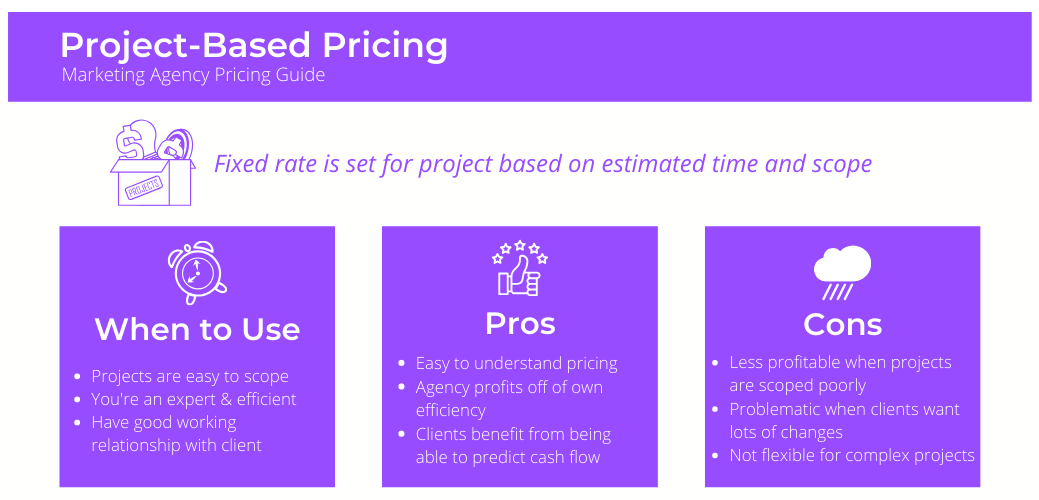
Source: Customersai
Here is an approximate list of questions you should ask, whether in a tête-à-tête meeting (kick-off meeting) or via digital communication channels:
- What specific results will you deliver in a week/month/year? What’s your scope of deliverables?
- What exactly do you consider to be out of scope? What can you not deliver within the current package/pricing model?
- How is success measured? What particular KPIs will you monitor and report on?
- How do deliverables scale if our budget increases — do we get more strategy or just more output?
- In case you underperform/underdeliver, what will be the implications for the pricing? Will it be lower, and if so, by how much?
- Are tools, reporting dashboards, and third-party platform fees included in the final pricing?
A strong marketing partner will be open with you about all these nuances and answer your questions straight. If you feel that they try to avoid direct answers or their replies don’t satisfy you in full, we recommend switching to the second or third shortlisted candidate from your initial list of shortlisted partners.
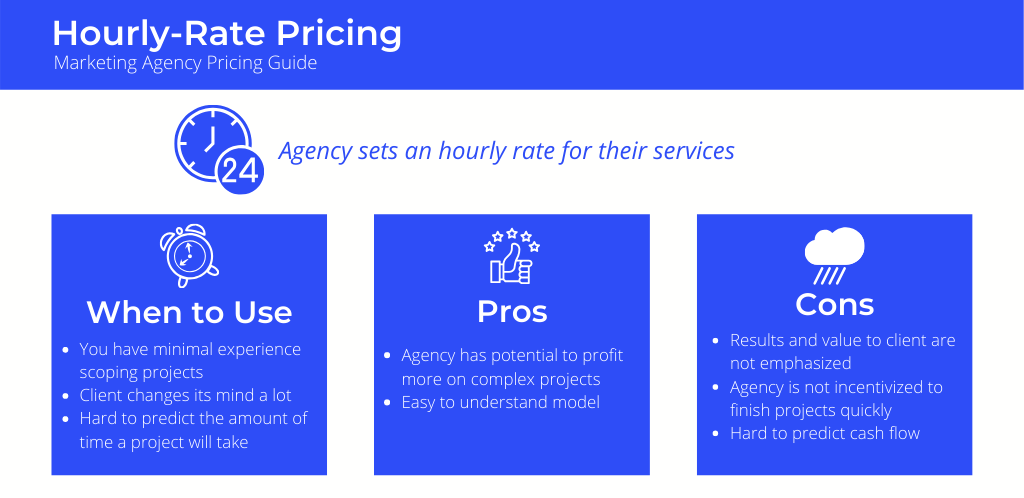
Source: Customersai
📌 The bottom line: That’s why staying in touch with 2-3 potential marketing agencies is always a superior strategy, until you are satisfied with all the set-up details, costs of their services, be it a simple guest post or a refined SEO campaign. That way you can clearly see how every element connects back to real marketing outcomes.
Clarifying reporting, KPIs, and accountability
One of the most frequent points, the real bottleneck of collaboration, where partnerships collapse, is the reporting. Most marketing agencies present themselves as data-centered, with decisions made entirely based on accurate and up-to-date marketing data.
However, the reality is often less bright; in the long run, agencies often fail to report in time or to be fully open with you about the progress made.
Your task is to prevent this from going too far by clarifying the reporting and accountability upfront. As early as the initial kick-off meeting, before you sign the agreement, you should ask about the reporting frequency and structure:
- Which KPIs will be included in reports, and how will they support your business/marketing goals?
- What format will KPIs be delivered in, and will they include just raw numbers, commentary, or actionable recommendations (the last option is what you should ideally get)?
- Who is responsible for failing to meet these KPIs? Is this a senior enough person who can get things done quickly if something does not go according to plan?
- How will reporting reflect adjustments or experiments in real time? Who do we contact in case of urgent changes and foreseeable changes in the near future?
The true expertise and maturity will surface at this point. A partner who can answer the above-mentioned questions straight is a reliable one.
On the contrary, if they give complex and vague answers to your simple questions, and if they present you with a long list of metrics (measuring everything and everywhere) instead of a concise list of KPIs, that’s another clear red flag signaling the lack of reporting clarity and accountability. In the worst case, when something goes wrong in the process, you won’t be able to find responsible people and get fair compensation for the damage done.
Assessing team expertise and communication style
You hire an external marketing consultancy firm because you lack the necessary expertise in-house. That’s the key point, which should guide your decisions. Unless the potential partner has the required expertise and can communicate that clearly to you, you shouldn’t proceed with such cooperation at all.
How do you evaluate their expertise if you don’t have it in your team? Only through their past achievements and results, which are visible in case studies and other clients’ feedback.
Here is what you should do:
- Check the company’s reviews on the relevant review sites (e.g., Clutch, UpCity, G2, Trustpilot, and others).
- Contact their past clients and invite them to an open talk about their experiences with your candidate (the costs of such meetings should be entirely on you, but the output is usually totally worth it).
- Ask the company for their recent case studies/success stories, and always take what you get with a grain of salt (you can even contact the client involved to ascertain the results presented).
- Request to meet the actual specialists who will be working on your account, and assess their expertise (hard and soft skills, e.g., the ability to explain complex ideas in simple, practical terms).
Last but not least, what you could do is check their presence in professional communities, events, or thought leadership channels, such as webinars, guest articles, or conference talks. The goal? Indirectly evaluate their expertise and knowledge. Experts tend to share, not hide.
Content marketing capabilities you should expect
In most cases, businesses hire a marketing agency to do a full-cycle content marketing for them. Which capabilities should you expect, and which capabilities are a must in this case? Let’s dive into this aspect together.
SEO and organic growth strategy
Search engine optimization (SEO) is the foundation of content marketing. Without it, you’ll be wasting your energy and resources, distributing content (even a really great one) that no one will find and look at.
🧠 Strategic note: SEO can effectively help with organic visibility and drive high-intent traffic to your website, online store, or landing page.
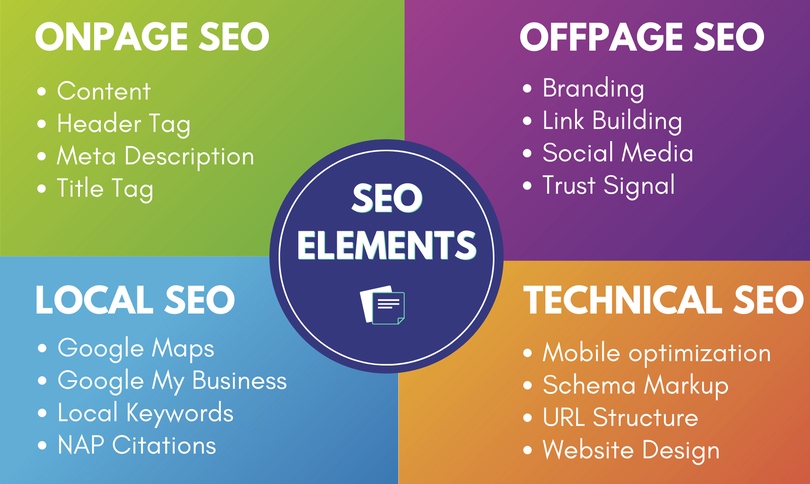
Source: Digitaltrainee
However, a skilled content marketing partner won’t start with content creation or keyword research. They’ll begin with a 360-degree evaluation of your business capabilities, including competitive landscape, customer base assessment, and the intent behind their every search query.
That's because a holistic SEO approach always starts with research. In general, here are the key SEO capabilities your content partner must demonstrate:
- Competitive gap analysis that shows how your rivals leverage content, where they shine, where they dip, and how you can take advantage of the opportunities.
- Keyword selection based on user intent, with clear segmentation by awareness, consideration, and decision stages.
- Technical content optimization, consisting of schema markup optimization, internal and external linking strategies, and metadata refinement.
- Long-term content mapping, with each content piece serving a particular goal on a user/buyer funnel.
- Authority-building tactics, such as strategic backlink acquisition, guest posting on high-authority resources, and managing multiple content channels.
What’s important here is that all the above-mentioned capabilities must be sustainable, i.e., realized on an ongoing basis, and not as an ad hoc or single project approach. Organic growth through SEO takes time, and what you have established today will continue to bring positive results if you know how to maintain and refine it with time.
Digital PR and authority building
Authority building deserves a separate chapter in our guide, as it is often the only factor (presence of authority) that distinguishes a good company from a great one. No matter how great your product or service is, if nobody credible is talking about it, your authority stays stuck at ground level.
Digital PR is how you pull your brand out of the “we promise we’re good” category and into the “others already trust us” tier. It's authority that is borrowed at first, then earned.
And let’s be clear — authority isn’t built by plastering your name all over every publication that accepts guest posts. It’s a highly targeted and intelligent action that stipulates carefully picking the right audience and the right communication channels.
A marketing agency must showcase to you the above-mentioned understanding, and be able to do the following:
- Getting you mentioned by credible voices, not whoever’s easiest to pitch.
- Publishing thought pieces that sound human, not keyword-stuffed.
- Turning data or insights from your own work into newsworthy angles.
- Building friendly, long-term ties with editors instead of sending cold blasts.
- Landing backlinks that make sense context-wise.
- Showing up on podcasts or webinars where your real audiences listen.
- Keeping tabs on how your name appears online and nudging it in the right direction.
The funny thing about authority is that you can’t chase it head-on. It comes from doing good work loudly enough that others start quoting you before you even join the thread.
That’s exactly what your potential partner must prove to you before you hire them: the understanding, relevant case studies, and in-house expertise.
Content distribution channels that drive engagement
Preparing great content is one part of the equation. Another equally important part is how to distribute content effectively to drive actual engagement and generate leads.
Your digital marketing partner must convince you upfront that they possess the necessary content distribution experience and skills. At a minimum, they should be able to distribute content efficiently via the following set of marketing channels:
- Owned platforms (email newsletters, blogs, dedicated social media, and community pages) where they possess full control.
- Social ecosystems (LinkedIn, YouTube, Facebook) — not for sales, but for thought leadership and ignition of relevant discussions.
- Influencer and expert collaborations (e.g., Medium) — for establishing connections that help with distribution.
- Podcasts and webinars — ideally, if they already have an established format and audience.
Distribution is where content becomes leverage. It’s how you stay present in your customer’s information stream without feeling intrusive or repetitive.
🧠 Leadership quote: As Bill Gates once put it: "Content is king, but distribution is queen — and she wears the pants."
Additional marketing capabilities every agency should offer
Besides SEO, content creation, and distribution, your future marketing services supplier must have a solid expertise in adjacent fields, such as PPC, analytics, social media, and email marketing.
Below, we explain what this expertise implies and explain how to find the right expertise across these areas when evaluating potential partners.
Paid advertising and performance marketing expertise
Paid advertising is one of the fastest ways to scale — but only if it’s managed with strategic intention. You’re not buying attention; you’re investing in results. And a qualified creative agency must know how to steer your ad spend toward profitable conversions.
Paid advertising in the digital age is typically realized in the form of pay-per-click (PPC) campaigns. Together with organic search optimization, they form a holistic marketing approach. One is quick (PPC), another is slower (SEO), but cheaper and sustainable.
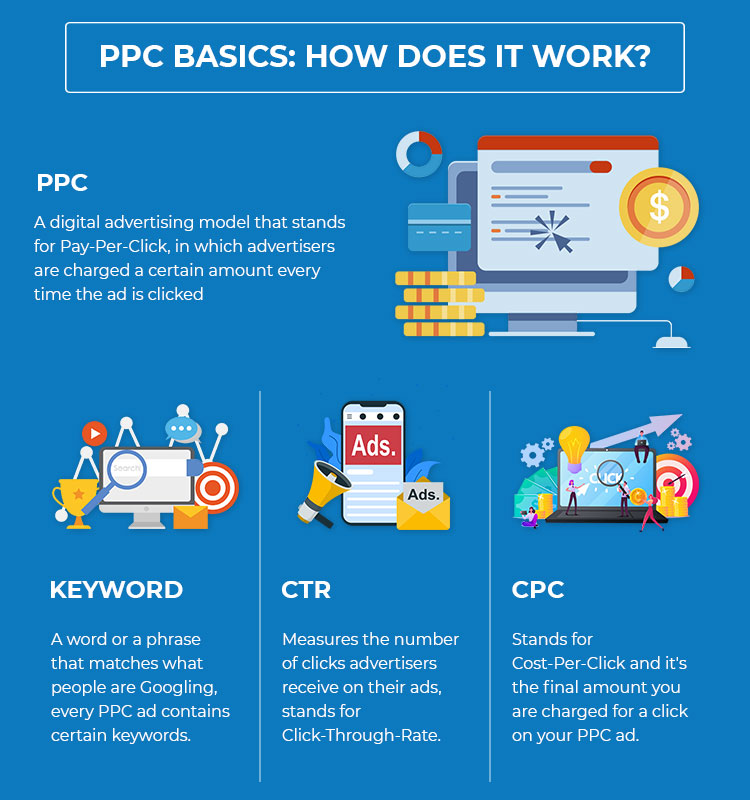
Source: Brainvire
When choosing a marketing agency, pay attention to the following essential indicators of PPC expertise:
- Ability to structure campaigns around intent — this will give you high-quality leads instead of random clicks.
- Experience with A/B and multivariate ad testing, i.e., optimizing your visuals, titles, headlines, and CTAs for maximum performance.
- Strong understanding of Quality Score optimization — you spend less, but achieve more (clicks, traffic, conversions).
- Competence in audience segmentation and retargeting, using behavioral data to target specific audience segments, and re-engage high-potential users.
- Landing page optimization capabilities — allowing you to convert traffic (leads) into real customers.
Finally, you’ll need transparent reporting on key PPC metrics. Ideally, the measuring process should focus on a few business-critical ones (KPIs), e.g., ROAS, CPA, lifetime value, and conversions.
A true marketing firm would speak with you in the language of results and profits, often expressed in conversions and revenue. They shouldn’t lure you with sweet talk about engagement and impressions.
For instance, they’ll ideally show you what will happen if you increase the budget by 20%, not just present vanity metrics.
📌 The bottom line: Performance marketing isn’t about being visible — it’s about being profitable. And if a partner can’t demonstrate a systematic approach to achieve that, you’re not dealing with growth specialists.
Marketing analytics and data-driven decision-making
Every move, every decision, and every action online can be tracked and measured. That's the beauty and the torment of digital marketing. Those agencies that can effectively work with big data, analyze it, they move ahead, while the rest that avoid it and stumble — they unintentionally make themselves obsolete.
However, analytics is more than reporting — it’s a decision infrastructure. Without solid data processing capabilities, marketing turns into a guessing game. You need a partner who builds a strategy around insights, not intuition.
Without further ado, the five key analytics capabilities to expect:
- Full-funnel tracking, from impression to revenue.
- Attribution model clarity, identifying which touchpoints drive conversions.
- Customized dashboards providing real-time performance snapshots.
- Segmentation analysis, allowing you to understand the varying behaviors of user groups.
- Forecasting tools and methods, used to model expected outcomes of sales decisions.
A professional marketing team would base its decisions on data and information, rather than gut feelings and theoretical brainstorming sessions. They must be able to show you why something is working, why something stopped working, and what the next best move is.
That’s the essence of data-driven decision-making. It ensures that you’re not just “doing marketing” — you’re engineering your outcomes.
Email, social media, and multichannel campaign execution
Although slow, email is a proven cost-effective customer communication channel, while social media is a faster and more versatile channel to enhance visibility, drive engagement, and manage reputation.
Both benefit from various automation tools, and if your prospective marketing partner cannot leverage both while saving resources and time via automation, it’s best to step away and look for a more capable partner.
Examples of campaign automation tools your partner should operate:
- HubSpot – all-in-one platform for email automation, CRM integration, and lead nurturing across channels.
- Mailchimp – email marketing automation for drip campaigns and segmentation-based messaging.
- Klaviyo – email and SMS automation for the ecommerce industry.
- Sprout Social – a powerful tool for social listening and engagement monitoring.
- Meta Ads Manager – campaign automation for Facebook and Instagram.
- Google Ads Smart Bidding – automated bidding strategies driven by machine learning to optimize ROI.
- Marketo – an enterprise-level platform for full-scale marketing automation.
Ask your contact person whether their company has extensive experience in operating these tools. They don’t have to use them all, but being a pro-user in at least some of them is a must for a modern marketing service provider.
📌 The bottom line: The ability to develop and execute marketing campaigns across multiple touchpoints is a must-have attribute of contemporary marketing consulting. Your marketing partner must be able to orchestrate campaigns that connect across multiple channels.
Making the final decision and setting up for success
Once all the competence and experience tests have been passed by your future marketing partner with flying colors, it’s time to make a final decision and set up your collaboration for success.
How do you do that? Through known onboarding best practices. And don’t forget about measuring performance early to minimize future risks.
Contract negotiation and onboarding best practices
After all your checkboxes have been ticked, contract signing may seem like a formality. But we assure you, it’s not. Framing your future cooperation is the final, but massively important step. A significant variability exists here, and your job is to negotiate the most favorable terms for your business.
This is where you decide how to collaborate, make decisions, and keep campaigns on pace with business goals. To arrive at the best possible contract with your partner, follow these four critical recommendations:
- Clarify performance benchmarks — not just deliverables.
Make sure the contract ties activity to outcomes wherever possible. Deliverables are not meaningful unless they are mapped to performance goals. - Secure rights to data, creative assets, and accounts.
The agency should not “own” your ad accounts, content, or analytics setups. Make sure everything built during the engagement remains your intellectual property. - Define what counts as “out-of-scope” ahead of time.
Scope creep is one of the biggest causes of hidden fees. Get clarity on what is included in the base agreement — and what requires separate approval. - Insert review checkpoints tied to measurable performance.
Instead of waiting until the end of a contract period, build in strategic checkpoints (e.g., 60 or 90 days) where both parties must assess performance and alignment.
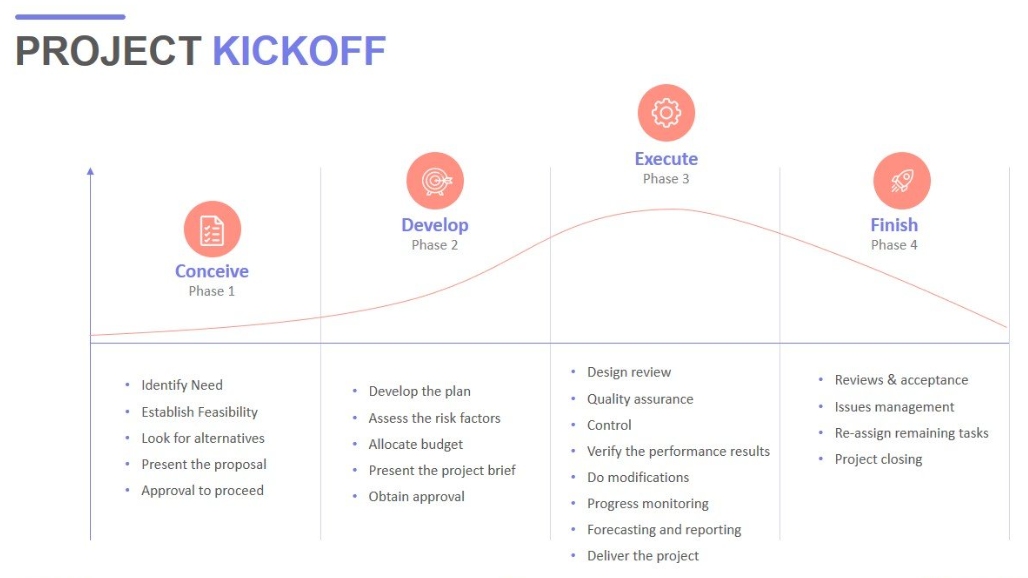
Source: Powerslides
Additionally, here are some onboarding best practices to insist on:
- Lock in clear definitions of what is in-scope and out-of-scope, to avoid surprise fees.
- Agree on the cadence and format of status updates, so communication is consistent.
- Ensure access to your analytics and ad platforms is granted early to avoid launch delays.
- Align on performance benchmarks, so ROI can be tracked transparently.
- Establish turnaround times for creative approvals and strategic recommendations.
- Include clauses that protect you against underperformance, tying payments to milestones where possible.
🧠 Pro tip: Consider implementing a performance-based compensation model. You may have a part of the contract pricing that is fixed, but some portion can be linked to actual performance. This will incentivize your partner to deliver more and to always exceed expectations.
Aligning agency goals with your business objectives
Making sure the agency pursues your business objectives is critically important; there is hardly any doubt in that. However, this alignment must take place early during the onboarding and kick-off phase, and not any later.
A good agency would be proactive in this respect: they’d ask for your business goals and priorities upfront, and build their offer around your goals. However, your role here is also no less important.
If you care about your investment (in collaboration with the marketing agency), you should supply your partner with complete and up-to-date business information, disclosing your business’s strong and weak sides alike.
🧠 Strategic note: Interestingly, the emphasis on the weak sides and potential problems is even more important, as this is where major opportunities for growth are.
So, go deep, be radically transparent, and give your partner the truth — not the polished version — so they can build a strategy that actually moves the business forward.
How to measure results in the first 90 days
Some prefer to measure results after 100 days, but the general threshold is considered to be three months. That period is enough for the new hire to demonstrate their potential in building momentum, validating assumptions, and confirming that the strategy is moving in the right direction. Some first results can also be expected — quick wins and emerging business gains.
Nevertheless, you’re not aiming for full profitability on day 90; you’re aiming for:
- Active campaigns running across all agreed channels.
- Foundational data being collected and interpreted.
- Clear patterns showing where the strongest performance will come from.
- Early wins that validate the strategy and build confidence in scaling next.
If the first 30 days are about setup, the next 60 days should be about testing and gaining traction.
Below are some of the core metrics that matter during this early phase:
1. Strategic alignment metrics:
- Clarity of campaign goals and message positioning.
- Delivery of initial strategy documents, content plans, and performance roadmaps.
- Tracking and analytics infrastructure correctly installed and functioning.
2. Execution velocity metrics:
- Campaign launch timelines vs the agreed schedule.
- Number of campaigns, content assets, or ads launched.
- Ad creative variations tested and landing page iterations made.
3. Early performance indicators:
- Impressions, CTR (click-through rate), cost-per-click, and quality score trends.
- Keyword ranking improvements for priority terms.
- Growth in organic reach, follower quality, or email list subscribers.
4. Conversion signals (leading indicators of ROI):
- Cost per lead vs initial benchmarks.
- Landing page conversion rates.
- Lead qualification rates or demo request volume.
- Early sales pipeline contribution metrics.
Finally, pay attention to the general dynamics of the collaboration. If you observe that all core business processes are stable and without changes, that’s more a bad sign than a good one.
In the agile business operating model (which most modern marketing companies adopt), optimizations must happen all the time, and during a 90-day period, they should be noticeable and well-documented.
Conclusion
You hire a marketing agency long-term. The choice of the exact partner to go with is difficult; it takes time, but with the recommendations and tips from this guide, it will become much less painful and chaotic:
- Hire only when growth stalls internally — not because you “should,” but because your business demands it.
- Choose partners who align with your goals, not those who try to fit you into a pre-made package.
- Look for full-spectrum capabilities — SEO, content, PPC, analytics, distribution — working as one system.
- Listen for strategy, not showmanship — real partners ask intelligent questions, not make loud promises.
- Spot red flags early — vague answers, templated proposals, and magic timelines are warning lights.
- Ask outcome-based questions — not just “what you do,” but “how you measure it and who’s responsible.”
- Negotiate contracts with leverage — performance checkpoints, asset ownership, and exit flexibility are non-negotiable.
- Make onboarding a strategic launch — alignment must happen at the start, not later.
- Track momentum in the first 90 days — campaigns launched, data flowing, clear direction emerging.
On the market, you’re in the same boat with your partner, i.e., your wins and losses become their reputational gains or damages, staying with them and either attracting or deterring new clients. A mature partner must understand this logic upfront, but it won’t hurt if you remind them of your intentions to frame your joint wins as case studies and your public reviews of their work.





